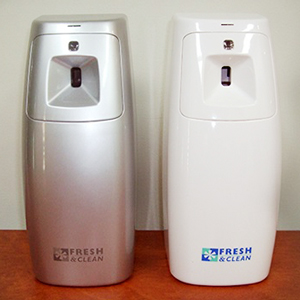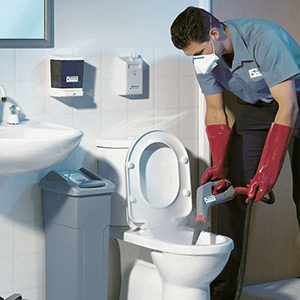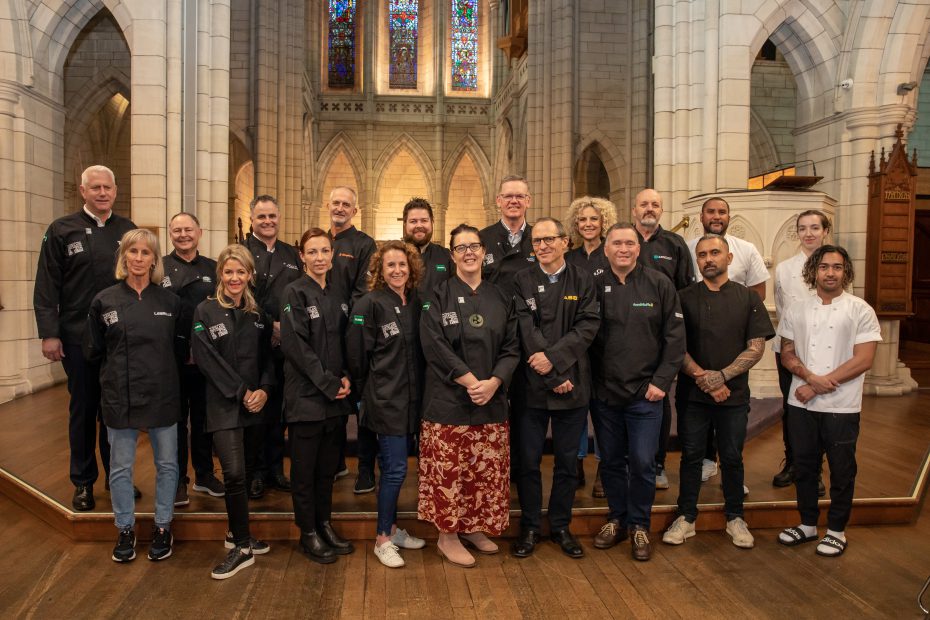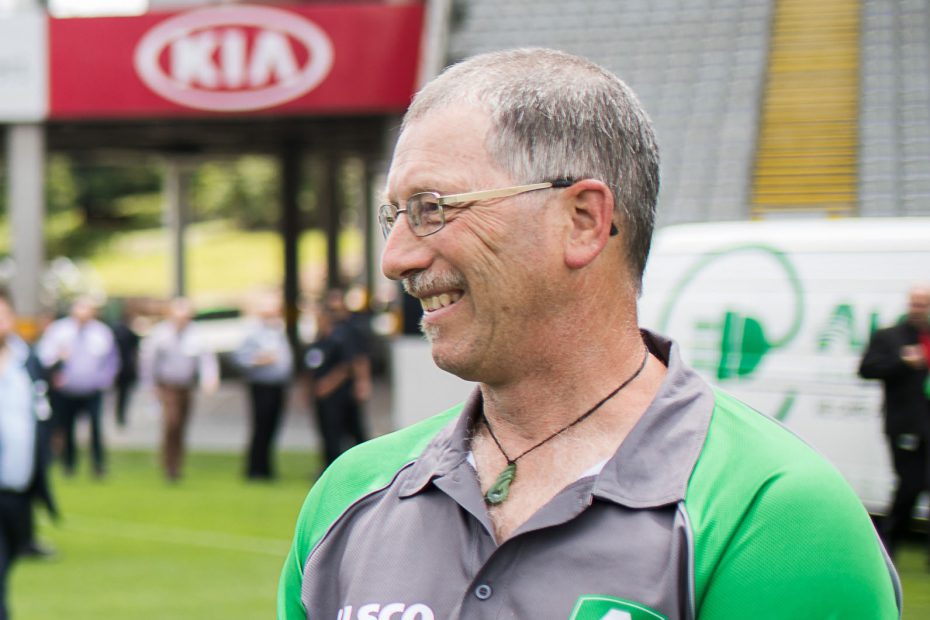There are a varied number of mixed reactions when you bring up waterless urinals.
Are they practical?
Are they better than conventional urinals?
Are they truly sanitary?
The last one may seem funny but when they were first introduced in the U.S in the early 1990s, this was the case in some parts of the country. Before their invention, plumbing codes were not equipped to deal with them.
Thus, by virtue of history, they really did start out as illegal devices.
James Krug is a versatile entrepreneur.
He served as a vice president of the Disney Channel in the 1980s and ran a distribution company with members of the Disney family in the ’90s.
About thirty years ago, he was a rising star in the film and television business. But eventually, Krug became convinced that the world did not need another TV show.
What it needed was a better urinal.
What Exactly are Waterless Urinals?
A waterless urinal does not differ in appearance from a conventional urinal.
Most times, all that is different is the lack of a flush valve or water piping that normally sits above the unit.
This is due to the quite obvious implication that they do not need water to operate.
Instead, waterless systems have a vertical-trap design that integrates a cylinder or trap filled with a thin layer of liquid sealant placed atop the drain area of the urinal.
Urine passes through the cylinder and sealant (the liquid is lighter than the urine); fills up then flows under the barrier layer and into the waste line where it is drained.
The sealant is important because it keeps sewer gases from backing up.
When a water-using urinal is flushed, the likelihood of germs becoming airborne is very high.
How so?
The force of the flush causes urine, germs and bacteria to splash onto walls, partitions, the floor, hands, clothes… you get the picture.
The water sitting in the toilet bowl is extremely conducive for the growth of bacteria.
Because they are living organisms, they require water for removal of waste and food uptake.
Also adding to the unpleasant odour no one likes in a washroom.
To have a clean and hygienic washroom, you need to take care of the toilets, ensure efficient hand washing and hand drying options, introduce effective odour control and make sure all the consumables are always in place.
Your other option is to contact Alsco New Zealand and have us keep track of all that. Here are our Washroom Services to choose from.
How Do You Clean a Waterless Urinal?
Although there exist slight differences depending on the manufacturer, cleaning a waterless urinal is pretty much standard procedure as a conventional urinal:
- Safety and hygiene are the most important factors for you or your employees. Gloves (and goggles) are required to clean any restroom fixtures.
- Discard any foreign object(s) in the urinal. Not to worry: the trap is designed to well… trap larger objects from entering the drain area.
- Never use toilet bowl cleaners or similar powerful cleaning agents on waterless urinals.
- Clean the urinal using an all-purpose cleaner or cleaner-disinfectant and a microfiber cleaning cloth.
- Never scrub waterless urinals with a brush or scouring device; these can scratch the interior of the urinal.
- Wipe clean andy the surfaces with a soft cloth.
- Clean the interior of the urinal first, then the exterior.
Cartridge/Sealant

Install our amazing wall-mounted Air Fresheners in your washroom
Due to the inclusion of cartridges, waterless urinals require special maintenance.
In most cases, cleaning professionals step in to oversee this process. Alsco New Zealand offers Odour Control services that are created with your washrooms in mind.
Although maintenance requirements may differ depending on the product, it mostly involves replenishing the liquid sealant to monitor odour control or replacing the cylinder as necessary.
There are a few signs to watch out for when it is time to switch out a urinal cartridge.
The unit itself may be experiencing “slow flow” issues — causing urine to flood the unit — or sealant may be seeping through the top of the device (usually visible in blue colour).
As the urinal is used, small amounts of the sealant are drained into the waste line and need to be replenished.
In a typical school, this amounts to about two refills per month.
A “portion aid” device is often provided by manufacturers that accurately measures just the right amount of sealant required. This is then poured directly into the cartridge.
The cartridge also requires replacing about four times per year or after every 7,000 uses (if you can keep track) although this can vary depending on the brand.
Cylinder and Valve Replacement
This process takes about four or five minutes:
- Remove the trap using the metal tool provided by the manufacturer.
- Gently ease it into the trap, unhinging it using a back and forth motion.
- Drain any excess liquids from the cylinder down the drain. Be careful doing this to avoid flooding the drainage or splashing urine onto nearby surfaces.
- With the trap removed, a bucket of (preferably) hot water should be poured down the drain to flush away any sediment particles.
- Insert a new trap and fill with sealant
Take note: some traps cannot be replaced and need to be taken apart for cleaning.
If there are odours coming from the urinal:
- Pour warm water mixed with cleaning agent into the drain to clean the valve of any debris.
- If odours still noticeable, extract the valve core, remove the top screen and clean thoroughly.
- If odours are still noticeable, change the valve core.
Regular Maintenance
This is critical to their proper operation.
This regular urinal service ensures the waterless urinal valves are working properly and the urinal pipework is clear of any foreign matter that may affect its function.
The regularity of maintenance depends directly on the amount of use of your waterless urinal.
If your waterless urinal is being used every day by more than 10 people, then it needs to be cleaned every day.
To save on cost keep in mind that there are instances waterless urinals should be avoided.
Although they are an excellent option for most sites, there can be instances where they are not best suitable:
- Badly designed drainage – because waterless urinals can be retrofitted easily, does not mean it should be done carelessly. Pipework that requires high levels of water flow due to long pipelines (or poor layout) will not work well with waterless urinals.
- Copper pipework – they simply aren’t compatible!
How Can You Make This All Easier?
Maintaining your urinals doesn’t have to be a hassle.
Alsco can help you keep your washrooms maintained with the highest standards of cleanliness and hygiene. Moreover, it will be done in a smart and environmentally friendly manner.
You can stop thinking about how much soap you have or if your washroom has an unpleasant odour.
That’s all on Alsco now.
Our knowledgeable and skilled employees will regularly replenish all the consumables from your washroom and, if you choose that option: deep clean all your toilets and showers.
Take it from one of our clients:
“Their pricing fitted with our budget allocation”
Kathryn Payne, Office Manager at Whakarongo School
Alsco AoG has supplied products to Whakarongo School since March 2017.
“We chose Alsco because their pricing fitted with our budget allocation for the products needed.”
Their service is great. Orders are delivered promptly, and any queries are answered quickly. There are regular phone calls from Alsco to check on product supplies and the staff are very friendly and helpful to deal with.”
Photo: Flickr



